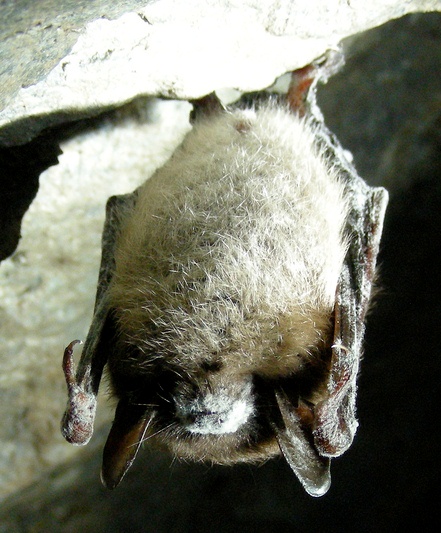Farewell to the Little Brown Bat
Consequences will be felt far and wide.
 The evening sky used to be filled with them … millions of little brown bats, the most common species of bats in North America, each of them eating their own weight in insects every night. Now they’re vanishing. A new study, published in the August edition of Science, concludes that they will most likely be extinct within 20 years.
The evening sky used to be filled with them … millions of little brown bats, the most common species of bats in North America, each of them eating their own weight in insects every night. Now they’re vanishing. A new study, published in the August edition of Science, concludes that they will most likely be extinct within 20 years.
It’s not just bad news for the bats. Their disappearance will be felt across the entire ecosystem. There will be significant effects on agriculture and on our forests – both of which have depended for their health on how the bats control the insect population. The balance of nature will be altered in ways we cannot yet estimate.
The bats are being laid waste by white-nose syndrome – a fungus that grows on their noses, ears and wings. The irritation of the fungus causes the bats to wake up early from hibernation and, with no food available in what is still winter, to die of cold and starvation.
The disease, which was first observed in the Northeast in 2006, had already spread as far as Oklahoma by this spring. State and federal authorities are trying to slow its expansion by keeping humans out of caves and other places where the bats gather.
Other measures that have been considered include putting some colonies of bats in zoos where they might be safe from the disease and perhaps, when some treatment has been discovered, releasing them.
The article in Science quotes bat conservation experts as calling this “the most precipitous decline of North American wildlife in recorded history” – faster than the destruction of the American bison and the passenger pigeon.
There are growing fears that if the fungus can have such a disastrous effect on this most common bat species, then other less numerous kinds of bats will soon be affected, too.
The most urgent need, right now is to understand the nature of the fungus and how it spreads. Congress has allocated $1.9 million to this research. A great start but Bat Conservation International says that a further $5 million is needed to effectively fight WNS. You can help by going to their website.
